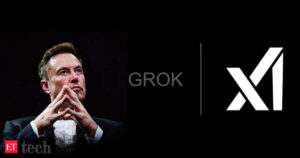Introducing Grok Vision: Elon Musk’s AI ‘Sees’ the World Through Your Camera

Grok Vision: Elon Musk’s Innovative AI Technology
Elon Musk has continually pushed the boundaries of technology, and his latest creation, Grok Vision, is set to redefine how we interact with artificial intelligence (AI). This groundbreaking technology harnesses the power of computer vision, allowing AI to visually interpret and understand the world through the lens of your own camera.
What is Grok Vision?
Grok Vision is an advanced AI system designed to process and analyze visual data. Much like human vision relies on visual cues, Grok Vision utilizes camera input to identify objects, interpret scenes, and provide context-based feedback in real time. The technology aims to enhance user experience by making interactions with devices more intuitive.
How Does it Work?
Grok Vision operates through several key technologies and processes:
Computer Vision: This technology enables the AI to interpret visual data. It involves the use of algorithms and models that help the AI understand images and videos, recognizing patterns and objects.
Deep Learning: By leveraging vast amounts of data, Grok Vision uses neural networks to improve its accuracy over time. This allows the system to learn from its experiences, continually enhancing its performance.
Real-Time Processing: One of the essential features of Grok Vision is its ability to process information quickly. This attribute ensures that users receive immediate feedback, making the technology practical for everyday use.
- User Interaction: Grok Vision is designed to be user-friendly. Users can interact with the technology seamlessly, allowing for an enhanced experience in various applications, from smart home features to augmented reality environments.
Features of Grok Vision
Grok Vision distinguishes itself with an array of unique features:
Object Recognition: The AI can identify and categorize various items in its field of view, whether it’s people, animals, or inanimate objects.
Scene Interpretation: Beyond recognizing individual objects, Grok Vision can analyze scenes, understanding the context and providing insights into the environment.
Augmented Reality Integration: Grok Vision can be integrated into AR applications, allowing users to view overlays of information in real time, enhancing real-world experiences.
- Accessibility Support: One of its goals is to improve accessibility for individuals with disabilities, providing them with real-time information about their surroundings.
Potential Applications
The implications of Grok Vision span numerous industries and sectors:
1. Smart Homes
- Grok Vision can enhance smart home devices, allowing them to react and respond to user presence, ensuring higher energy efficiency and convenience.
2. Healthcare
- In medical settings, Grok Vision could assist in analyzing medical images or providing valuable insights during surgeries, improving patient care.
3. Automotive Industry
- Autonomous vehicles can benefit from Grok Vision’s capabilities to navigate and interpret road conditions, enhancing safety and performance.
4. Retail
- Retailers can use Grok Vision to analyze customer behavior in stores, providing real-time insights that help improve customer service and store layout.
Challenges Ahead
Despite the innovative nature of Grok Vision, several challenges remain:
Privacy Concerns: As the AI uses camera input, concerns over data security and personal privacy are significant. Companies must establish robust guidelines on data usage and protection.
Algorithm Bias: Like many AI technologies, Grok Vision may face issues related to bias in its algorithms, which can affect object recognition and interpretation accuracy.
- Technical Limitations: While the technology is evolving, there may still be limitations regarding its ability to interpret complex scenes or unusual environmental conditions.
In Summary
Grok Vision represents a significant leap forward in artificial intelligence. With its ability to understand and interpret visual data through cameras, this technology opens up new avenues for user interaction and engagement across various fields. As this technology continues to develop, it promises to reshape our relationship with machines in profound ways.





